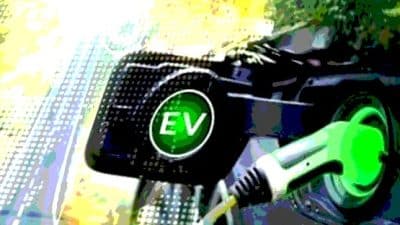
“Virginia is on a steady path forward with our bay-improvement efforts,” McDonnell said. “The significant progress in the wastewater sector has set a strong foundation for reaching the goal on which we all agree: ensuring we have a healthy and productive Chesapeake Bay that will continue to be the ecological and economic engine of this region. When I ran for governor I made a commitment to continue Virginia’s longstanding bipartisan efforts to improve the health of the bay. Today’s announcement is another major step forward in this ongoing endeavor. This is great news for all those who enjoy the bay, from weekend boaters to commercial fisherman, and it demonstrates our work to reduce nutrient pollution in Virginia’s waters is paying off.”
“Our progress to date clearly shows that a restored bay is possible,” Secretary of Natural Resources Doug Domenech said. “Working with our agriculture, wastewater, development, and local government partners, we will continue to meet – and where possible, exceed – our commitments in the Chesapeake Bay milestones. The progress announced today is a credit to the efforts of localities and these partners.”
In making the announcement, McDonnell announced four important accomplishments:
· Virginia major wastewater facilities in 2011 exceeded pollution reduction goals by more than 2,000 percent for nitrogen and more than 450 percent for phosphorus.
· The U.S. EPA’s Region 3 has awarded Virginia their “Biggest Loser” for ranking first in the region and second in the nation for reducing nitrogen pollution as reported through the Clean Water Act nonpoint source program. In 2011, Virginia’s activities prevented 2.5 million pounds of nitrogen from entering streams and lakes.
· Virginia reported more phosphorus and bacteria load reductions than any other state in EPA’s Region 3, an area that includes Pennsylvania, Maryland, Delaware, West Virginia, and the District of Columbia. Phosphorus loads were reduced by 216,000 pounds.
· Virginia’s state budget will allocate $92 million toward point and non-point water quality programs the highest general fund appropriations to the WQIF in the past five fiscal years.
“We are seeing a major rebound in populations of blue crabs, oysters, osprey, eagles, Atlantic striped bass, and flounder,” said Anthony Moore, Deputy Secretary for Chesapeake Bay Restoration.
The Chesapeake Executive Council, the body that oversees the bay program, directed the development of two-year “milestones” in 2008 to improve accountability and measure progress toward meeting the water quality goals through reductions of nitrogen, phosphorus and sediment.
The first set of milestones, established in 2009 before the issuance of the Chesapeake Bay Total Maximum Daily Load (TMDL), included a commitment to reduce discharges from major wastewater treatment plants annually by 233,000 pounds of nitrogen and 126,000 pounds of phosphorus. Results released by the U.S. EPA show that Virginia’s major wastewater facilities in 2011 exceeded these goals by more than 2,000 percent for nitrogen and more than 450 percent for phosphorus.
“The significant state and local investments in sewage treatment plant upgrades and the commitment of the facility owners since the adoption of tributary strategies in the last decade have set the stage for Virginia to meet its obligations in its Chesapeake Bay TMDL Watershed Implementation Plan,” said David Paylor, Director of the Department of Environmental Quality.
Virginia also has adopted legislation that will ban the use of phosphorus in lawn maintenance fertilizers and improve the management of nutrients on urban and suburban lands. Other legislation, approved in 2012, will lead to the greater use of nutrient credits. This has the potential to increase flexibility and lower the cost of nutrient reductions over the long term.
As the state’s designated non-point source pollution agency, the Virginia Department of Conservation and Recreation (DCR) annually receives an average of $3.5 million in Clean Water Act funds to reduce non-point source pollution in the Commonwealth’s waters. This includes coordinating with the state’s 47 Soil and Water Conservation Districts to promote the proper use and storage of nutrients, or nutrient management, and other conservation best management practices on Virginia’s agricultural lands. These efforts are instrumental to the state’s efforts to restore the Chesapeake Bay and impaired streams and waterways statewide.
“Most of the reported reductions were achieved through nutrient management planning for farms,” said David Johnson, DCR Director. “DCR recruited and trained more plan writers, who were connected with farmers through Virginia’s Soil and Water Conservation Districts. The partnership resulted in nutrient management plans for 340,806 acres in fiscal 2011.”
The installation of 400 best management practices also reduced loads of nutrients and bacteria. These included projects to exclude livestock from streams, repair or replace aging septic systems and increase vegetation along stream banks.










